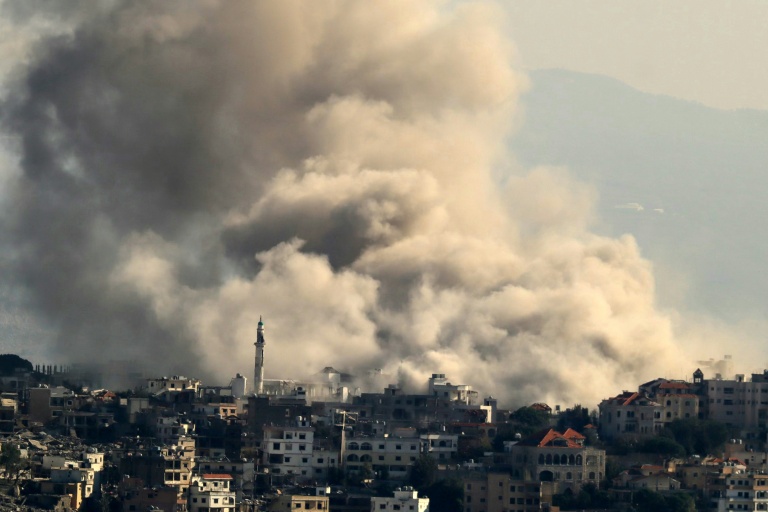AFP
Zaporizhzhia residents braved grey skies and driving rain to visit the banks of the Dnipro, not to relax in riverside bars and resorts, but to contemplate a sea of mud.
When the Kakhovka dam was breached last week — in what Kyiv and its allies believe was an act of Russian sabotage — the river level upstream dropped dramatically.
In the city of Zaporizhzhia, a sandy beach now gives way to a stinking mudflat, and sightseers have been left to survey the damage 15 months of war has dealt to their environment.
Despite the devastation, the riverside is still a place of contemplation for some, like 32-year-old Andrii Vlasenko, who was walking alone sweeping the mud with his metal detector.
Andrii and his wife and child fled a Russian-occupied area to the south of the city a year ago and he has so far been unable to find work.
Five months ago, his 63-year-old father was killed by shellfire in his home village.
For him, the newly exposed riverbed is an opportunity to forget his pain and indulge his peaceful hobby as a metal detectorist.
“I came maybe to find something. At least, while searching my soul retreats. That’s why,” he said.
His morning’s haul was meagre — no gold or silver, but one Ukrainian coin and one Soviet-era kopek.
Before the war, citizens of Zaporizhzhia had access to beach holiday resorts on the Azov Sea coast, now occupied by Russian forces and completely beyond reach.
Now, with the retreat of the Dnipro, even the small family resorts in the forests south of the city no longer open onto sandy riverbanks but onto slimy silt.
Yuriy Kara, a 39-year-old IT specialist, sheltered from the rain under the hatchback of his car, sipping a coffee and bitterly reflecting on the scene.
“I was here in the first day when water started dropping. On June 9, the water was closer. It drops every day,” he said, as a seabird splashed into the shallows to search for food.
“I was just discussing it with my friend, that soon there will be no Dnipro river for us.”
Opinions differ about how far the river has fallen but retired steel worker Gennadiy, stripped to his underpants and knee-deep in water under a tall jetty, had the answer.
Pointing at the tide marks on the stone pile towering above him, he made his estimate.
“So the water level was… How can I show you? It was up there. Look, see that brick? It was up to the higher one, three metres,” he told AFP reporters.
The changes to the Dnipro have also served as a reminder to the city that, even though Ukraine is counter-attacking Russian troops nearby, the war can still reach them in unsettling ways.
Cellphone company employee Anna Lashuna, 28, and her sisters fled Russian-occupied territory in June last year and are fearful for an elderly grandmother they left behind.
“No-one even thought that they could do something like this,” she said of the shrunken river.
“We do not know what to expect next from them. It could get worse. I hope it will end as soon as possible.”

AFP







